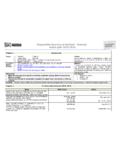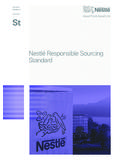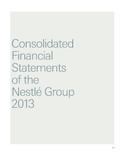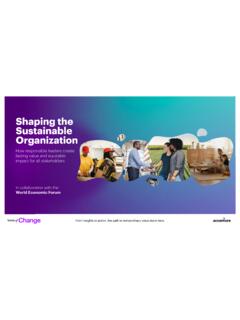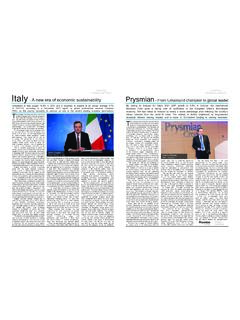Transcription of Accelerate, Transform, Regenerate: Nestlé’s Net Roadmap
1 1 nestl s Net Zero RoadmapAccelerate, Transform, Regenerate: nestl s Net RoadmapFebruary 20212 nestl s Net Zero Roadmapcontents3 We commit to net zero by 20504 The nestl Net Zero Roadmap5 Measuring our carbon footprint6 Our total emissions by Scope 7 Emissions covered by our pledge8 Our key actions at a glance9 Sourcing our ingredients sustainably Dairy and livestock14 Sourcing our ingredients sustainably Soil and forests19 Transforming our product portfolio23 Evolving our packaging28 Using renewable energy to manufacture our products32 Driving toward cleaner logistics37 Removing carbon from the atmosphere40
2 Moving toward carbon-neutral brands44 Using our voice to galvanize action48 Glossary3 nestl s Net Zero RoadmapClimate change is one of society s greatest challenges. It is also one of the greatest risks to the future of our it requires all of us to act with great urgency. As the world s biggest food and beverage company, we have the size, scale and reach to influence others and to inspire collective action. Now we are going beyond our commitments: we are specifying our plan to halve nestl s greenhouse gas (GHG) emissions by 2030 and to achieve net zero by 2050 even as our business continues to grow.
3 We are making our footprint transparent and will make our progress clear. People will be at the heart of our climate actions. We strive to ensure that our initiatives promote a just transition toward a regenerative food system for all. The work behind all of this is detailed, rigorous and intense. It requires us to examine not only our operations but also each of our products to see how we can make them better for the planet. And as most of our emissions occur outside of our own four walls, we must go on the ground to collaborate with our suppliers and help them improve their production processes.
4 At the other end of the value chain, we look forward to working with our customers to shape their offering and with our consumers to encourage more sustainable purchasing and consumption. We need action from governments and regulators to create clear and fair rules for companies to make progress. But nestl must first lead by example. It is only by taking tangible actions that we can convince others to do the same. And it is only together that we can make a positive COMMIT TO Net BY 2 0503 nestl s Net Zero Roadmap4 nestl s Net Zero RoadmapNestl s Net RoadmapOur path to regeneration for future generationsSolving the problem means identifying the problem.
5 We found nestl emitted 92 million tonnes of greenhouse gas emissions in 2018*.Now we know the extent, we know the road our promiseAdvanced agricultural techniques will deliver a regenerative food system at scale, supported by zero emission logistics and company operations. We will balance any remaining emissions through high-quality natural climate solutions that benefit people and the fasterWe re excited to hit the soil running. We re accelerating our work in manufacturing, packaging and carbon-neutral brands. We re also investing CHF billion to help spark regenerative agriculture across our supply chain, as part of a total investment of CHF billion by upFurther down the greener path, we will invest in new technologies and fundamental changes to our products and businesses around the our ingredientsManufacturing our productsPackaging our productsManaging logistics Travel and employee by operation (million tonnes of CO2e, 2018)Our milestonesPath to zero emissions by 2050 Business as usual*Total GHG emissions were 113 milliontonnes (CO2 equivalent)
6 In 2018,92 of which are in scope of our C 50% of key ingredients through regenerative agricultural methods by 2030 Plant 200 million trees by 2030 Use more renewable thermal energy in our manufacturing2030202520212018By 2050, we will reachnet zero2050100% certified sustainable cocoa and coffee by 2025 Source 20% of key ingredients through regenerative agricultural methods by 2025 Cut virgin plastic in our packaging by a third by 2025100% deforestation free for primary supply chains** by 2022100% of our packaging recyclable or reusable by 2025 Plant 20 million trees a year 100% renewable electricity in all our sites by 2025 Switch our global car fleet to lower emission options by 2022100% certified sustainable palm oil by 2023 nestl Waters becomes carbon neutral by 2025 Companies and their
7 Emissions grow over time. That s why we re promising to be net zero based on our 2018 baseline, no matter how much our company 2025, we will reduce our emissions by 20%By 2030, we will reduce our emissions by 50%**Scope: Direct supplies of palm oil, pulp and paper, soya, meat and nestl s Net Zero RoadmapWe take a whole life cycle approach to determining the carbon footprint of our products. It is a process that involves working with many others, such as farmers, logistics providers and consumers. To achieve net zero GHG emissions by 2050, we need to act throughout our value emissions from farm to forkDOWNSTREAMA gricultureSourcing high-quality ingredients from suppliers, co-operatives and direct from material suppliersSourcing materials and ingredients and transporting them to nestl .
8 ManufacturingMaking our manufactured products. LogisticsStoring and delivering our products around the world. Retail and business channelsOffering and selling products to shoppers in stores. ConsumersOur consumers enjoying nestl s products wherever they are. End of lifeFor products and operationsCustomers, consumers and end of lifeSuppliers to nestl measuring our carbon footprint6 nestl s Net Zero RoadmapEmissions from our direct operations, known as Scope 1 and Scope 2, accounted for just 5% of our GHG emissions. The vast majority of our GHG emissions (95%) come from activities in our supply chain.
9 As a result, that is where we focus most of our TOTAL EMISSIONS BY SC OPEN estl s total GHG emissions by Scopemillion tonnes of CO2e, in 2018 Scope 1 Emitted directly sources we own or c ontrol such as on-site combustion (coal, natural gas, fuel for company s vehicle fleet).Scope 2 Emitted indirectly the generation of purchased energy like electricity and heating/cooling 3 All other indirect emissions our value chain, both upstream and downstream, such as sourcing and use of sold have been al113million tonnes of CO2e7 nestl s Net Zero RoadmapWhat s not included As a company at the start of its net zero journey, following SBTi guidelines for now we have excluded the following emissions from our net zero pledge:Progress toward net zero will be measured against our 2018 GHG emissions.
10 We calculated this baseline and defined our footprint in partnership with South Pole, an external setting our targets, we have followed the Science Based Targets initiative s (SBTi) criteria. They provide a clearly defined pathway for coupling future-proof growth with reductions in GHG emissions. As our Scope 3 emissions make up 95% of our footprint, we are addressing more than 80% of these. The SBTi approved our targets in November data is our starting point. As we enhance our ability to identify and measure emissions, and better use the data that has been disclosed by our suppliers and others, our monitoring will improve.


